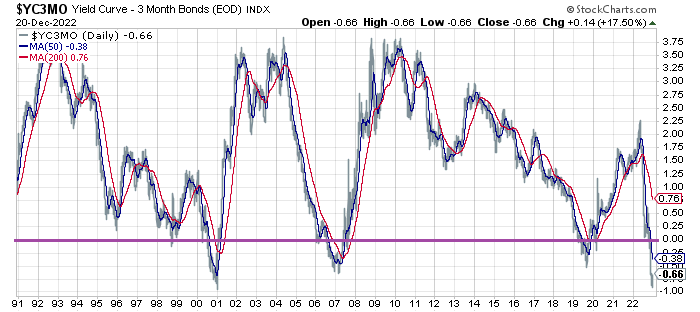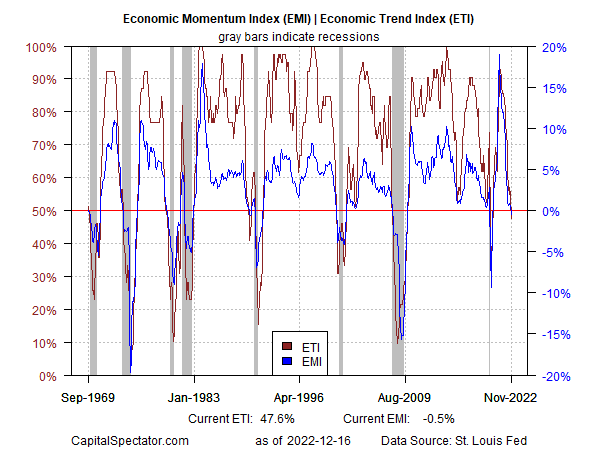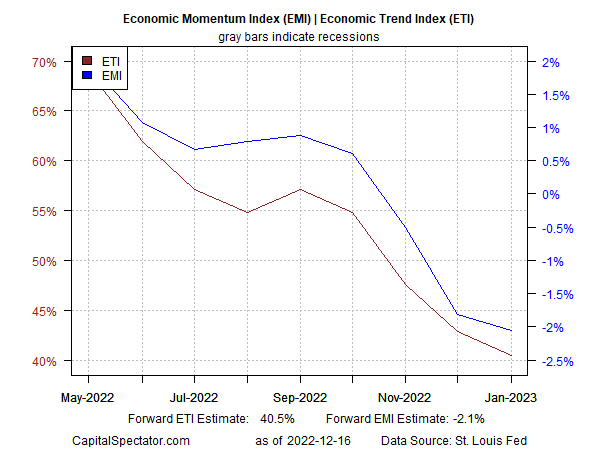U.S. economy grew 4.3% in the third quarter, crushing estimates
Judging by the ink spilled on the topic over the years, the overwhelming assumption is “yes.” Surely by the standard of using one indicator, the spread on short-term, less long-term yields for US Treasuries is tough to beat. But just when you thought it was safe to rely on the yield curve to forecast recession risk, the “godfather” of this indicator is expressing doubt.
Cam Harvey, a Duke University professor and research director at Research Affiliates, downplays the risk of recession currently forecast by the negative spread of the 3-month yield less its 10-year counterpart. Speaking to Business Insider, he said,
“Do I expect a recession? No. Each episode is different, and this episode is just so different.”

Harvey reasons the inverted curve signal’s reliability is debatable this time for three reasons.
- A labor shortage.
- The yield curve is inverted on a nominal basis but still positively sloped in real (inflation-adjusted) terms.
- The yield curve’s popularity may negate its efficacy as a forecasting tool.
He added,
“There’s this adage that once a signal for forecasting becomes popular, it stops working. You’ve got an inverted yield curve — people know that that’s got a very strong track record. That impacts their expectations, it changes their behavior, and people become more cautious, and yes, economic growth slows.”
Harvey’s doubts are reasonable but no less striking given his previous embrace of the yield curve’s powers and his status as an early adopter of the indicator’s forecasting prowess (Insider reports that he “discovered” the yield curve as a recession indicator in his 1988 doctoral thesis). In a 2019 interview, he advised that the yield curve “doesn’t give a false signal—at least over the last 60 years that we’ve measured it.” (Numerous studies from other sources agree, and several were published by the New York Fed, for example.)
If it’s truly different this time or not, the yield curve (and its variations) still deserves to be on the short list of analytics for monitoring and forecasting recession risk. But as Harvey now seems to recognize, using it in isolation and assuming it enjoys near-flawless power to see into the future is going too far. Welcome to the club, professor.
I’ve always been skeptical of one-indicator recession analytics, even if the one indicator is the yield curve, which certainly ranks second to none in the toolkit (and probably always will). But as I advocate in my 2014 book Nowcasting The Business Cycle and the weekly updates of The US Business Cycle Risk Report, relying on one predictor is needlessly risky.
As reams of studies over decades show, combining forecasts from several models and indicators (assuming they’re complimentary to some degree) tends to boost reliability. (As a digression, combining predictors is a productive exercise for developing forecasts.)
On that note, it appears that the US economy is contracting, albeit mildly, based on the Economic Trend Indicator and Economic Momentum Indicator, a pair of proprietary business-cycle indexes comprised of more than a dozen indicators, including the yield curve.

Business-cycle indicators from other sources tell a similar story at the moment. For instance, the New York Fed’s Weekly Economic Index now appears to be signaling a downturn in progress.
It’s still early to assume that a recession is a fate, although projecting ETI and EMI into the near-term future, based on a relatively reliable estimating methodology, suggests that the subtle, almost imperceptible distinction between growth and contraction will soon tip deeper toward the latter. But until the full set of revised numbers for the economy through December are in hand, a degree of doubt will endure.

Yes, my recession call could be a false signal. The only flawless recession test is the one that NBER employs: using a long lag period to define recession start and end dates well after the fact.
Calling recessions in real-time, by contrast, is challenging. But short of a surprisingly strong run of incoming economic data in the weeks ahead, it appears that the die is cast.
That still leaves room for a short and/or shallow recession or a period of stagnation. But if you need absolute proof one way or another, tune in around this time next year for the NBER’s press release, or the lack thereof.
